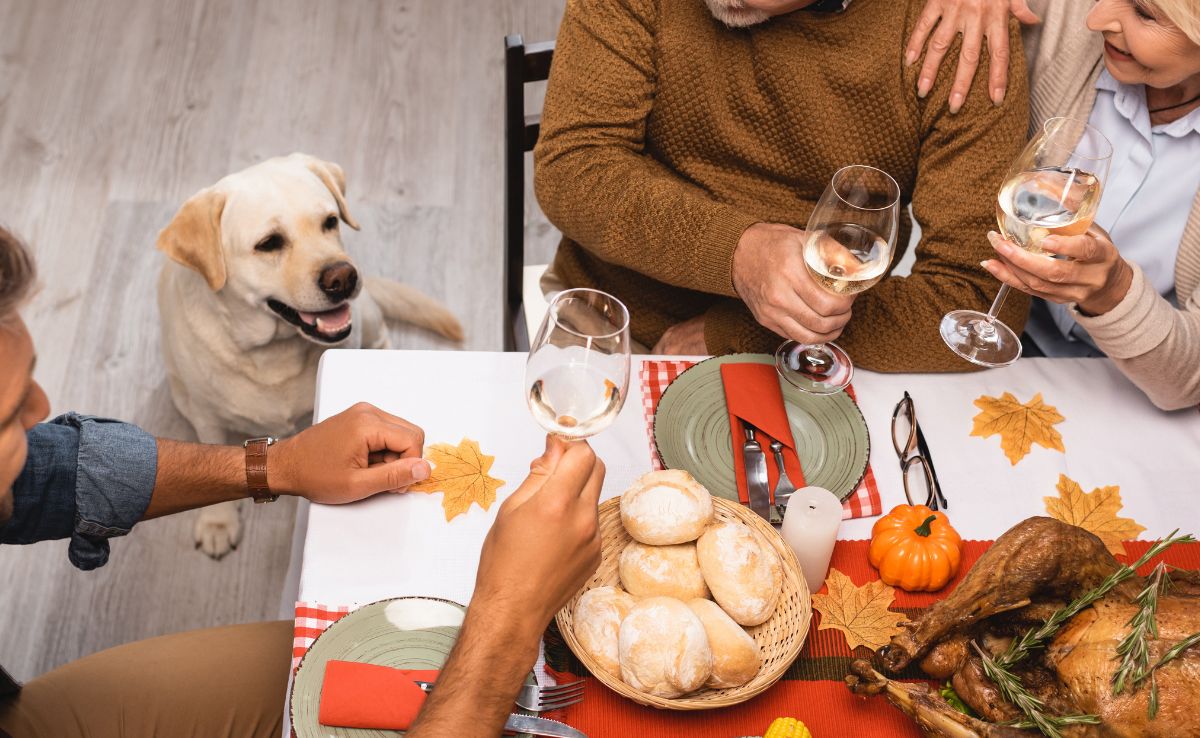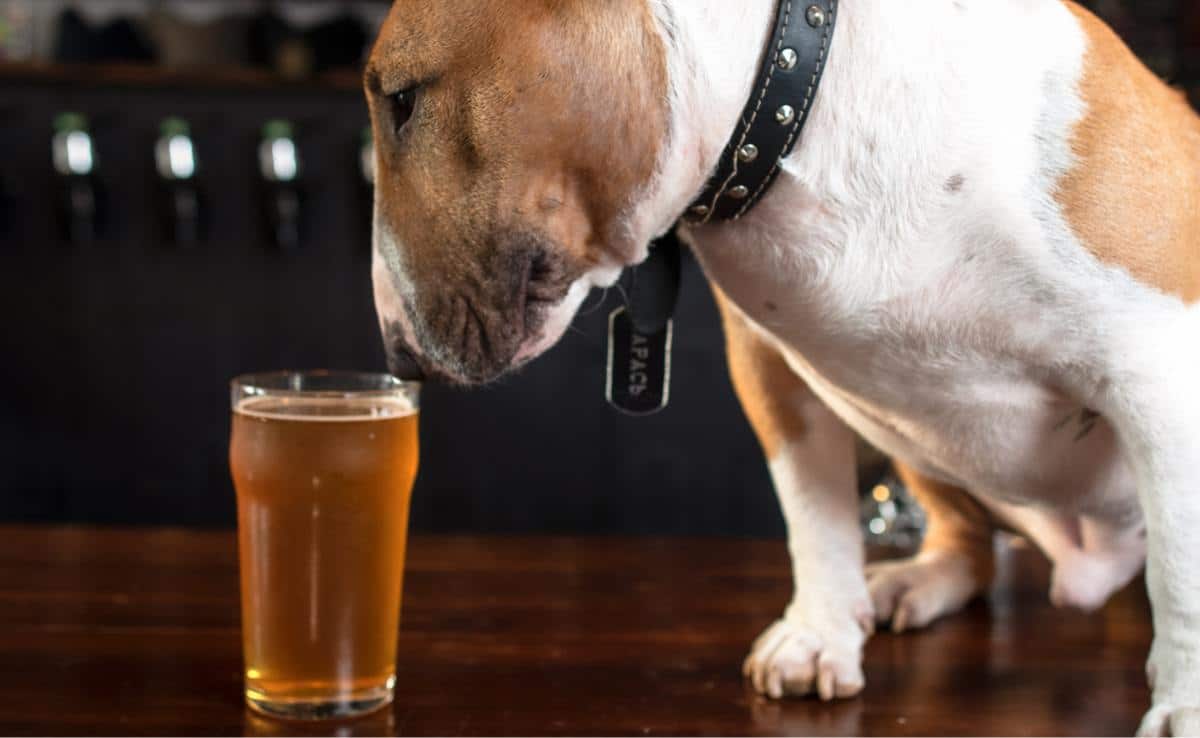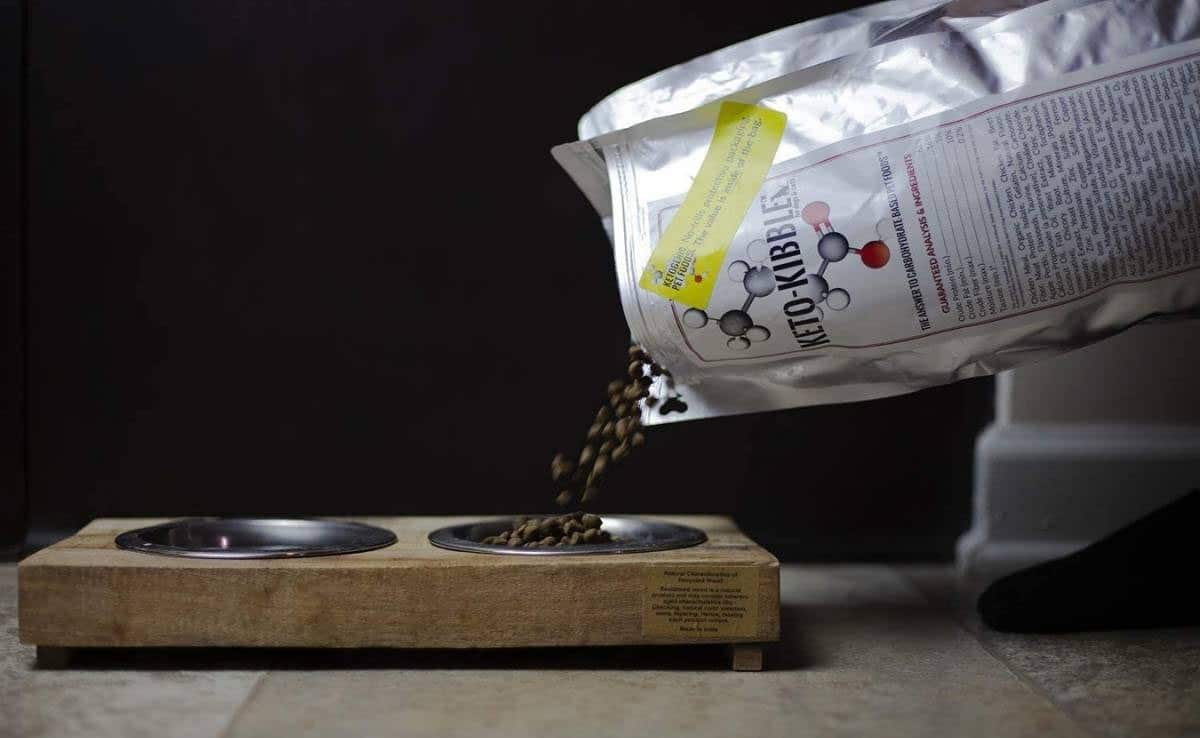5 Grain-Free Dog Treats So Good, You’ll Want To Try Them Too
When you purchase through links on our site, we may earn a commission. Here’s how it works.
Your dog deserves more than a stale, store-bought biscuit. Especially when you could be serving up peanut-butter-pumpkin goodness, liver cake that smells like heaven (to them), or frozen pops that are perfect for a summertime treat.
Table of Contents
These aren’t just treats, they’re grain-free snacks that make store-bought biscuits look like cardboard. Get ready to discover creative, tail-wagging recipes you’ll feel good about serving.
1. Peanut Butter + Pumpkin Power Cookies
This is the treat that does it all: soothes bellies, wins obedience wars, and makes your dog look at you like you hung the moon. The combination of pumpkin and peanut butter is like cozy fall vibes in a cookie, except you can serve it year-round thanks to canned puree.

Why It Works
- Pumpkin is excellent for digestion, and dogs love the earthy sweetness
- Coconut flour keeps it grain-free and low-carb
- Peanut butter adds healthy fat and that irresistible nutty smell
DIY Recipe: Pumpkin + Peanut Butter Power Cookies
Ingredients:
- 1 ½ cups of coconut flour
- 1 cup of pumpkin puree
- ½ cup of doggy peanut butter
- ½ cup of coconut oil
- 3 eggs
Preparation:
- Preheat oven to 350°F.
- Mix all ingredients in a bowl until it forms a dough.
- Lightly flour your surface with coconut flour. Roll dough to ½” thick.
- Roll the dough to ½” thick and cut into shapes using cookie cutters (or a glass, we won’t judge).
- Place on a parchment-lined baking sheet.
- Bake 13–15 minutes until golden.
- Let cool completely before storing or serving.
Recipe credit: UrbanBlissLife
2. Frozen Berry Pops: What Happens When Summer Hits Your Dog Bowl
This one’s for the pups who sprint to the fridge every time the ice machine rattles.
These frozen bites are basically fruity piña coladas for your pup, without the hangover or tiny umbrella. Made with coconut oil, almond butter, and berries, they’re hydrating, cooling, and ridiculously easy to make.
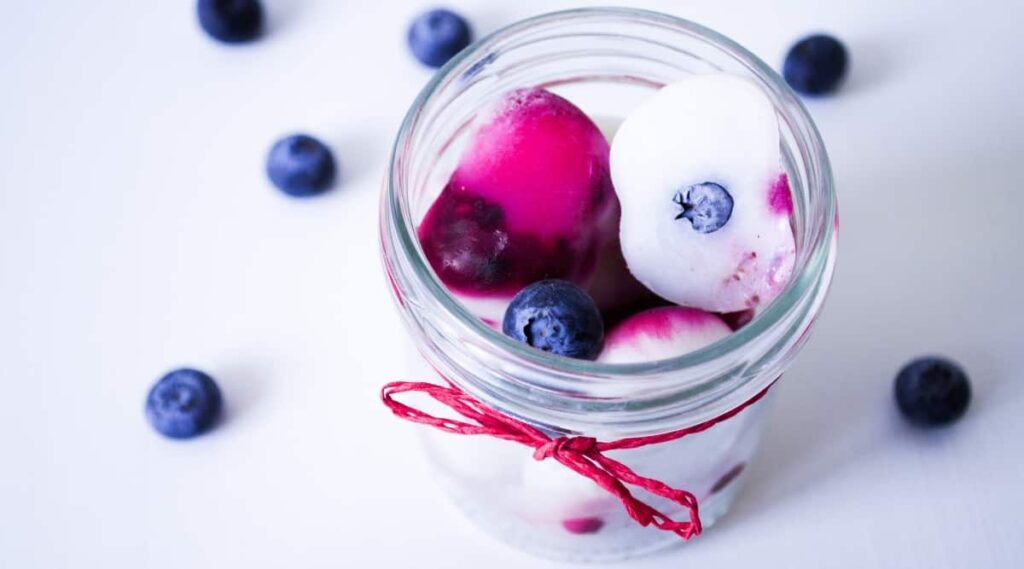
Why It Works
- Coconut oil supports digestion, skin health, and coat care
- Berries offer natural sweetness and antioxidants
- Almond butter gives it a protein-rich, creamy bite
DIY Recipe: Frozen Berry Coconut Treats
Ingredients:
- Coconut oil (amount depends on mold size)
- Blueberries or raspberries (or both!)
- A small dollop of almond butter per mold shape
Instructions:
- Melt coconut oil in the microwave or on the stove.
- Pour a little into each mold to coat the bottom.
- Add a dab of almond butter and a berry to each mold.
- Fill the rest of the mold with melted coconut oil.
- Freeze for 20 minutes or until solid.
Portion Tip: Use about ½ teaspoon of total volume per 10 pounds of dog weight.
Pupsicle Perks
- Great for summer cooling
- Supports coat and gut health
- Made with just 3 ingredients
Recipe credit: ProudDogMom
3. Meat + Sweet = Treat: Why Dogs Lose Their Minds For This Combo
Forget the science for a second—this combo just works. The sweet potato gives just enough natural sugar to trigger the “YUM” button in your dog’s brain, while the meat hits that primal, tail-wagging carnivore core. It’s like wrapping bacon around a marshmallow, but healthy.
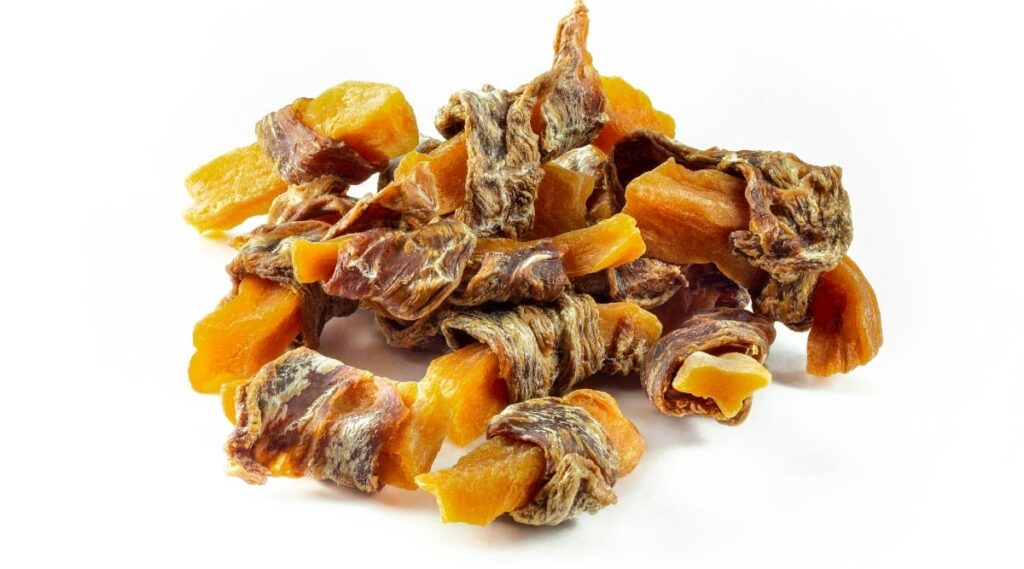
Why It Works
- Sweet potatoes offer fiber, beta-carotene, and a sweetness that dogs go bonkers for
- Chicken or turkey gives lean protein and an irresistible scent appeal
- This combo is chewy, smells amazing in the oven, and keeps pups busy longer than most treats
DIY Recipe: Meat-Wrapped Sweet Potato Twists
Ingredients:
- 1 or 2 chicken breasts (or other meat)
- 1 large sweet potato
- 2 tablespoons of coconut oil
- 1 tablespoon fresh parsley
Preparation:
- Preheat the oven to 180F.
- Cut the potato into wedges and wrap the meat around the wedge, securing with a toothpick
- Place onto a foil-lined tray.
- Brush each wedge with coconut oil and sprinkle with parsley.
- Bake for for 3 to 4 hours until they look dry.
- Let cool, then remove toothpicks before serving.
Storage + Safety
- Fridge: 5 days
- Freezer: 3 months (wrap in parchment + airtight bag)
- REMOVE the toothpick.
Recipe credit: Clean Eating Mag.
4. Liver Cake: A Perfect Birthday Treat
Let’s be real: this one smells … intense. But if your dog could write Yelp reviews, this would be five stars and bookmarked.
Liver cake is rich, savory, and absolutely magnetic to dogs. It’s also packed with iron, vitamin A, and protein, which makes it perfect for birthdays, training, or bribing your dog to stop barking at the mailman.
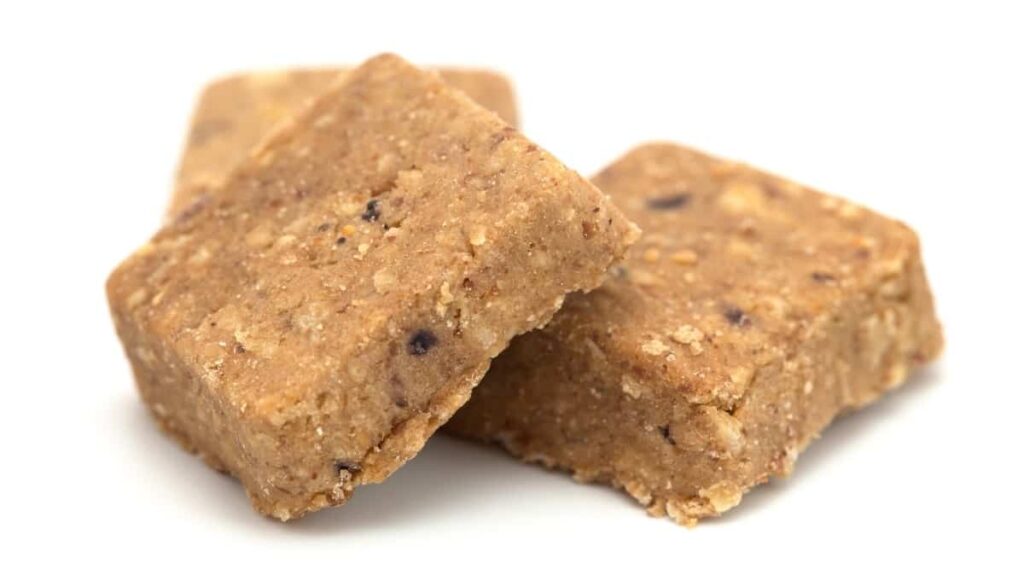
Why It Works
- Liver is a nutrient-dense superfood (in moderation!)
- The pungent smell amps up treat motivation for even distracted dogs
- Easy to bake, easy to cut into training squares
DIY Recipe: Luxurious Liver Cake
Ingredients:
- 1 lb liver (beef or chicken)
- 1 egg
- 1¼ cups potato flakes (instant mashed potato base)
- Beef or chicken broth (just enough to blend into a thick paste)
Instructions:
- Preheat oven to 400°F.
- Cut liver into chunks and puree in a food processor.
- Add egg and potato flakes. Blend.
- Slowly add broth until mixture is a thick, spreadable paste.
- Pour into a greased 13×9 baking dish.
- Bake for 25 minutes until firm.
- Cool 5 minutes in pan, then flip onto a wire rack to cool completely.
- Cut into squares and refrigerate.
Storage Notes
- Fridge: 2–3 weeks max
- Freezer: Up to 2 months
- Smell factor: Store in a sealed container unless you want to smell like dog bait
Recipe credit: DogTreatKitchen
5. Frozen Whatever-Fruit Treats
Fruit bowl looking a little … sad? Don’t toss those stragglers—turn them into icy little gifts your dog will love.
These freezer-friendly treats are simple, flexible, and surprisingly beautiful. You might even steal one on a hot day (we won’t tell).
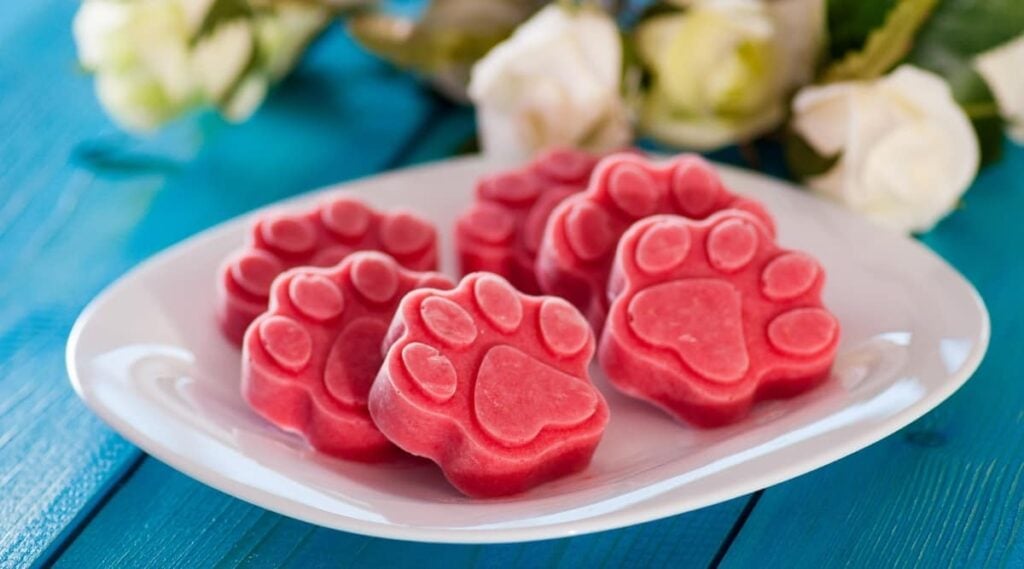
Why It Works
- Uses up leftover fruit before it spoils
- Yogurt adds probiotics and creaminess
- Great for summer hydration and portion control
DIY Recipe: Blend-and-Freeze Fruit Cubes
Ingredients:
- 2 cups of dog-safe fruit (like watermelon, banana, or strawberries)
- ¼ cup plain yogurt (no added sugar or xylitol)
Instructions:
- Place ingredients into a blender or food processor and blend until smooth.
- Pour into silicone molds or ice cube trays.
- Freeze until solid—about 3–4 hours.
Soft-Serve Hack: If your dog prefers a slushy texture, freeze for just 15–20 minutes.
Portion Note: A small handful is perfect for the average-sized dog. Adjust based on your pup’s weight and activity level.
Recipe credit: BareFeetintheKitchen
Bonus: Flavor Combos To Try (And What They Do)
Ready to experiment beyond the basics?
These dog-approved combos offer new flavors and functions to match your pup’s mood, needs, or snack craving. Just skip the grains—every mix here stays true to our grain-free promise:
- Blueberries + Coconut + Mint: Fresh breath meets antioxidant power. Great for summer cooling and gut health.
- Sweet Potato + Apple + Cinnamon: A fiber-rich combo with cozy flavors dogs love. Cinnamon can even support blood sugar regulation.
- Chicken + Spinach + Parsley: Protein-packed with vitamins and chlorophyll. Great for energy and natural breath-freshening.
- Banana + Almond Butter + Chia Seeds: High in potassium and omega-3s. Chia seeds offer fiber without any grain.
- Carrot + Strawberry + Coconut Oil: Lightly sweet, packed with beta-carotene, and perfect for skin and coat support.
As always, introduce one new mix at a time and watch for any reactions. The simpler the combo, the easier it is to pinpoint what works (and what doesn’t).
Treat Safety 101: What Every Dog Owner Should Know
Homemade dog treats are a huge win, but just like people’s food, they need to be served smart. Using the wrong ingredients or feeding too many goodies at once can leave your dog with an upset stomach or worse.
Before you hand over a freshly baked cookie or icy fruit cube, here’s what you need to know.
Introduce New Treats Gradually
Even a simple, healthy ingredient can upset your dog’s stomach if they’ve never had it before. The trick is to start small—think one bite—and wait a day or two before offering more. That way, you’ll be able to spot any changes in digestion or energy.
Sudden dietary changes can trigger soft stool, flatulence, or vomiting. While this doesn’t always mean an allergy, it’s a red flag that something didn’t sit right.
Take note of the ingredients and give your pup’s system time to reset before trying again.
Watch For Food Intolerances
Unlike allergies, which cause immediate immune reactions, intolerances can be sneakier. You might notice excessive itching, frequent ear infections, or chronic diarrhea, especially after repeated exposure to the same treat.
Keep a food journal for new recipes and ingredients. If your dog shows symptoms, pause the treat for at least two weeks and consult with your veterinarian.
Don’t assume grain or dairy is the problem—many dogs react to proteins or additives just as often.
Don’t Forget About Portion Control
Just because a treat is homemade doesn’t mean it’s calorie-free.
Many DIY treats—especially those with nut butters or oils—pack a caloric punch. Overfeeding can lead to weight gain or even nutritional imbalance.
Use treats primarily for training or as a reward, not as part of regular meals. The general rule is that treats should account for no more than 10% of your dog’s daily caloric intake. For most dogs, that means a few small bites per day, not a bowlful.
Check For Spoilage
Homemade treats don’t contain preservatives—yay! However, that also means they spoil more quickly.
If a treat changes color, smells sour, or develops mold, toss it immediately. Dogs have tough stomachs, but spoiled food can still cause GI distress or bacterial infections.
Store baked treats in airtight containers and keep them refrigerated if they’re soft or moist. Freeze extras whenever possible to extend shelf life without sacrificing freshness.
Know When To Call The Vet
If your dog reacts badly to a treat, don’t panic, but do pay attention.
Mild digestive upset can pass quickly. But persistent vomiting, diarrhea lasting more than 24 hours, or signs of lethargy and abdominal pain warrant a call to your vet.
Keep the ingredient list on hand so you can share what your dog ate. The sooner your vet has the details, the faster they can rule out toxicity or more serious reactions.
Expert Tips: Smarter Snacking For Healthy Dogs
Making your own dog treats gives you complete control over ingredients, freshness, and nutrition. But even homemade snacks can go wrong if you’re not careful with portions, storage, or safety.
These tips help you get the most out of every bake or freeze, while keeping your pup healthy, happy, and ready for more.
Grain-Free Diets Aren’t Always Necessary
Most dogs can handle grains just fine. Reserve grain-free options for dogs with diagnosed allergies or sensitivities, and always consult your vet first.
A Note on Grain-Free & DCM Concerns
In 2018, the FDA began investigating a potential link between grain-free diets and dilated cardiomyopathy (DCM), a serious heart condition in dogs. As of 2024, research suggests the issue may be more related to high levels of pulses (like peas and lentils) than the absence of grains themselves.
The takeaway? The cause is still unknown, but moderation and vet guidance matter. Grain-free treats like the ones above, given occasionally, are not considered a risk.
If your dog’s main meals are grain-free, talk with your vet to ensure they’re balanced and pulse-limited. As for grain-free treats? These are designed to be occasional snacks—not full meals—so they’re not considered a DCM risk when given in moderation.
Stick To The 10 Percent Rule
Treats should make up no more than 10 percent of your dog’s daily calories. For a medium-sized pup, that’s roughly one to three small snacks a day.
Avoid These Common Dangers
- Xylitol (toxic and potentially fatal)
- Chocolate, grapes, raisins (very toxic)
- Onions and garlic (can damage red blood cells)
When in doubt, search it before you serve it.
Storage Tips That Keep Treats Fresh
- Baked treats: Airtight container for 5 days or freeze up to 3 months
- Frozen treats: Store frozen and serve as needed
- Liver-based treats: Refrigerate and use within 2 to 3 weeks
Frequently Asked Questions
Homemade dog treats are fun to make and even more fun to serve, but they come with questions. We gathered the most common things pet owners wonder when they start baking for their dogs. Whether you’re worried about freezing, food safety, or your dog’s allergies, you’ll find answers here.
Did we miss one? Ask your question in the comments!
Can I Freeze Any Homemade Dog Treat?
Most baked and blended dog treats can be frozen with excellent results. Freezing helps preserve freshness, reduces food waste, and lets you batch-prep treats in advance.
However, avoid freezing anything with raw eggs, dairy-heavy bases like cream cheese or soft cheese spreads, or treats made with strong-smelling proteins, such as fish, unless they are sealed extremely well. These can develop off-odors in the freezer and may lose texture or appeal.
How Do I Know If My Dog Has A Grain Allergy?
Grain allergies are relatively rare in dogs, but they do happen. Signs may include chronic itching, licking paws, recurring ear infections, or upset stomachs after meals.
It’s important not to self-diagnose. The symptoms of a grain allergy can mimic other food sensitivities or even environmental allergies.
If you’re concerned, consult with your veterinarian and consider a supervised elimination diet to determine the root cause.
Are Store-Bought Treats Bad For Dogs?
Not necessarily. Some commercial treats are well-formulated, nutritionally balanced, and safe. However, others are packed with fillers, sugar, artificial colors, and preservatives that can cause health issues over time.
Always check the ingredient list. Look for real, whole food ingredients and avoid anything with too many additives or vague meat by-products. The fewer the ingredients, the better.
Can I Use Vegetables Instead Of Fruit?
Yes, and it’s actually a great idea. Many vegetables make excellent low-sugar alternatives to fruit in homemade treats. Cooked carrots, green beans, peas, and sweet potatoes are all safe for dogs and provide essential fiber and nutrients.
Just make sure you’re avoiding toxic options like onions and garlic, even in powdered form. Keep seasonings simple—dogs don’t need salt, spices, or sauces.
How Often Should I Rotate Treat Recipes?
Variety isn’t just fun—it’s good for your dog’s health. Rotating treat recipes every week or two exposes your dog to a broader range of nutrients and flavors. It also helps prevent boredom, especially if you’re using treats for training or enrichment.
If your dog has a sensitive stomach, introduce new ingredients gradually, one at a time, to avoid digestive issues.
Looking For Grain-Free Food, Too?
Treats are just one part of the puzzle. If you’re rethinking your dog’s entire diet, check out our complete guide to the best grain-free dog food. It breaks down the top picks, what to avoid, and how to transition your dog safely.
